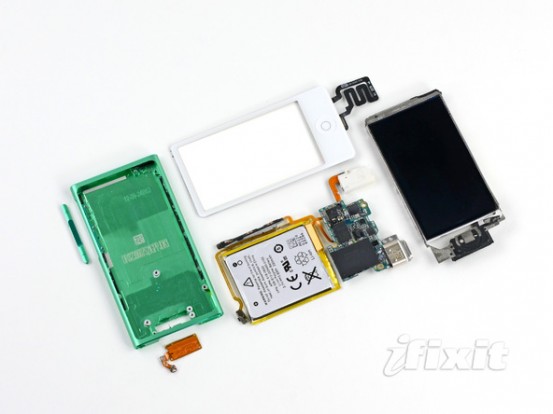IFixit disassembled the iPod nano 7G
In the near future, portal specialists iFixit The iPad mini and the new Macs have yet to be fully unscrewed, but for now they decided to take a close look at the internal structure of the iPod nano 7G player.
Unlike, which may dissuade many from purchasing the iPhone 5, the seventh generation iPod nano is not particularly exciting. Many critics agree that iPod nano 7G- a significant step back after the square sixth generation player, which was unusual in many respects. It cannot be used as a watch; it does not have a clip that allows you to attach the player to clothing; The place of the traditional iPod Click Wheel was taken by the Home button, although the sixth generation managed well without it.
But the editors of iFixit usually don’t care much about the appearance and functional usefulness of products: they arm themselves with screwdrivers and start unscrewing. So what's inside the iPod nano 7G?
iPod nano 7G vs iPod nano 6G
This time, iFixit decided to visually compare the player with the previous generation. They have almost the same width, little different thickness (if you don’t take into account the latch on the iPod nano 6G), and the height of the display differs by a factor of two.
The iPod nano 7G is by no means bulky, but it doesn't have the same compactness, which means it will need to be put in your pocket again.
iPod nano 7G antenna
On the back wall of the player there is a white plastic insert, vaguely reminiscent of a similar element of appearance on the iPad.
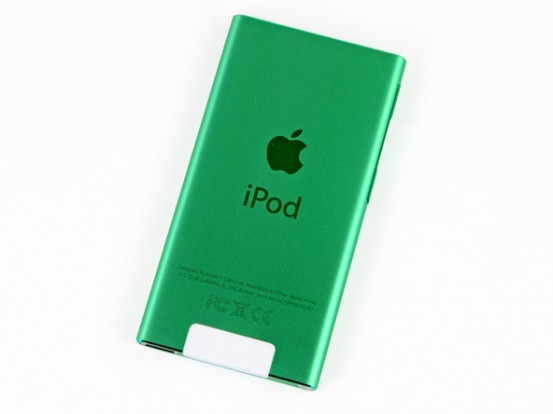
Like an iPad, there is an antenna hidden behind it, but it is designed only for a Bluetooth signal, through which the iPod nano 7G can broadcast sound to wireless headphones, speakers, or a car audio system.
It is impossible to disassemble the player without picking out the antenna. Hidden behind it are two screws that ensure the integrity of the iPod nano case:
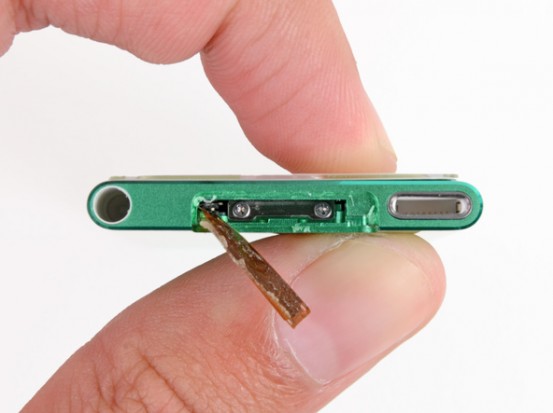
Once the screws are removed, you can begin removing the display.
iPod nano 7G display and battery
On iPod nano 7G, the display is not an integral part of the front panel. They are independent of each other, but to separate them, you need to carefully remove the entire front panel from the player body.
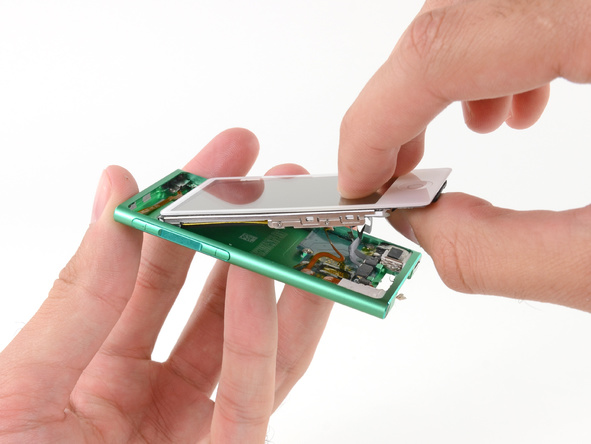
The operation is not the easiest - first you need to carefully unhook the thin cables. Attaching them back when reassembling is even more difficult.
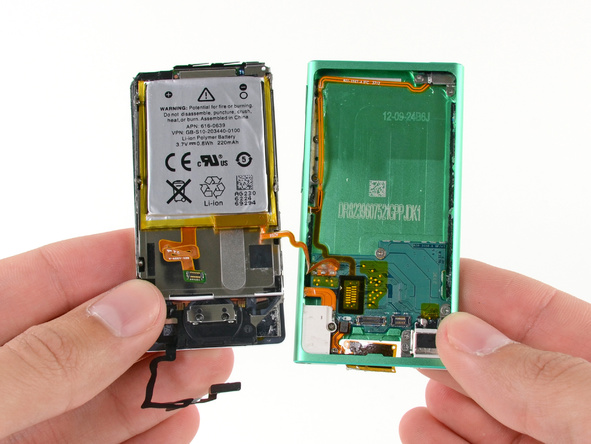
But further disassembly already refers to the highest technical aerobatics. The fact is that in the new iPod nano, Apple engineers decided to solder almost all important components to each other. And if the Lightning connector and mini-jack cannot be separated from the motherboard, then soldering the battery tightly to the board is an extremely dubious innovation.
By the way, iPod nano 7G battery retains twice as much charge (220 mAh) as in 6G - at least somewhere doubling the size has benefited the player :)
iPod nano 7G motherboard
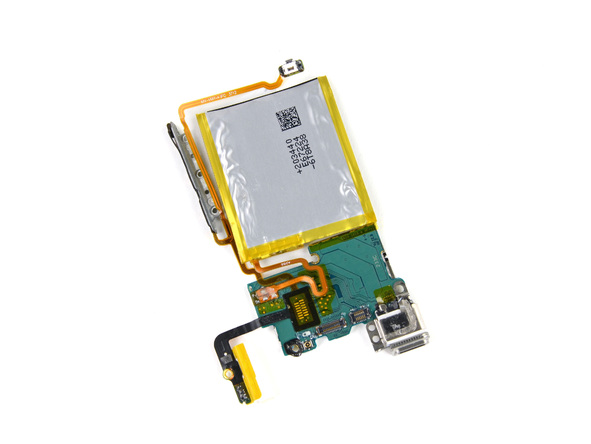
The board itself is extremely tiny, but due to the fact that all connectors and the battery are structurally inseparable from it, this complex occupies 90% of the internal volume of the player body. However, it uses a lot of mysterious chips, the purpose of which is not yet known.
